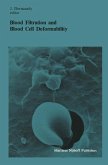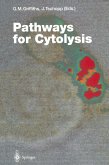After many years of relative neglect, the importance of study of factors governing blood flow has at last achieved recognition; in this volume are documented many of the techniques, and the basic scientific and clinical observations, which have helped to open up understanding of this highly important aspect of human physiology and pathology in recent years. The text is logically divided into five sections beginning with blood cell deformability, then moving on to theoretical consideration of blood rheology, followed by accounts of the interrelationships between rheology, blood flow and vascular occlusion. The final two sections deal with blood rheology in clinical practice and therapeutic aspects of the study of blood flow. As regards blood cell deformability (Section A), the basic problem is set out by Kiesewetter and colleagues in the first paragraph of chapter 1 (p. 3), in which they point out that whereas human erythrocytes at rest have a diameter of approxi mately 7. 5 /-tm, nutritive capillaries have diameters ranging from 3-5 /-tm, and chapters in section A give an account of the ways in which the red cell can undergo deformation to permit capillary perfusion and the maintenance of the microcirculation.
Dieser Download kann aus rechtlichen Gründen nur mit Rechnungsadresse in A, B, BG, CY, CZ, D, DK, EW, E, FIN, F, GR, HR, H, IRL, I, LT, L, LR, M, NL, PL, P, R, S, SLO, SK ausgeliefert werden.









